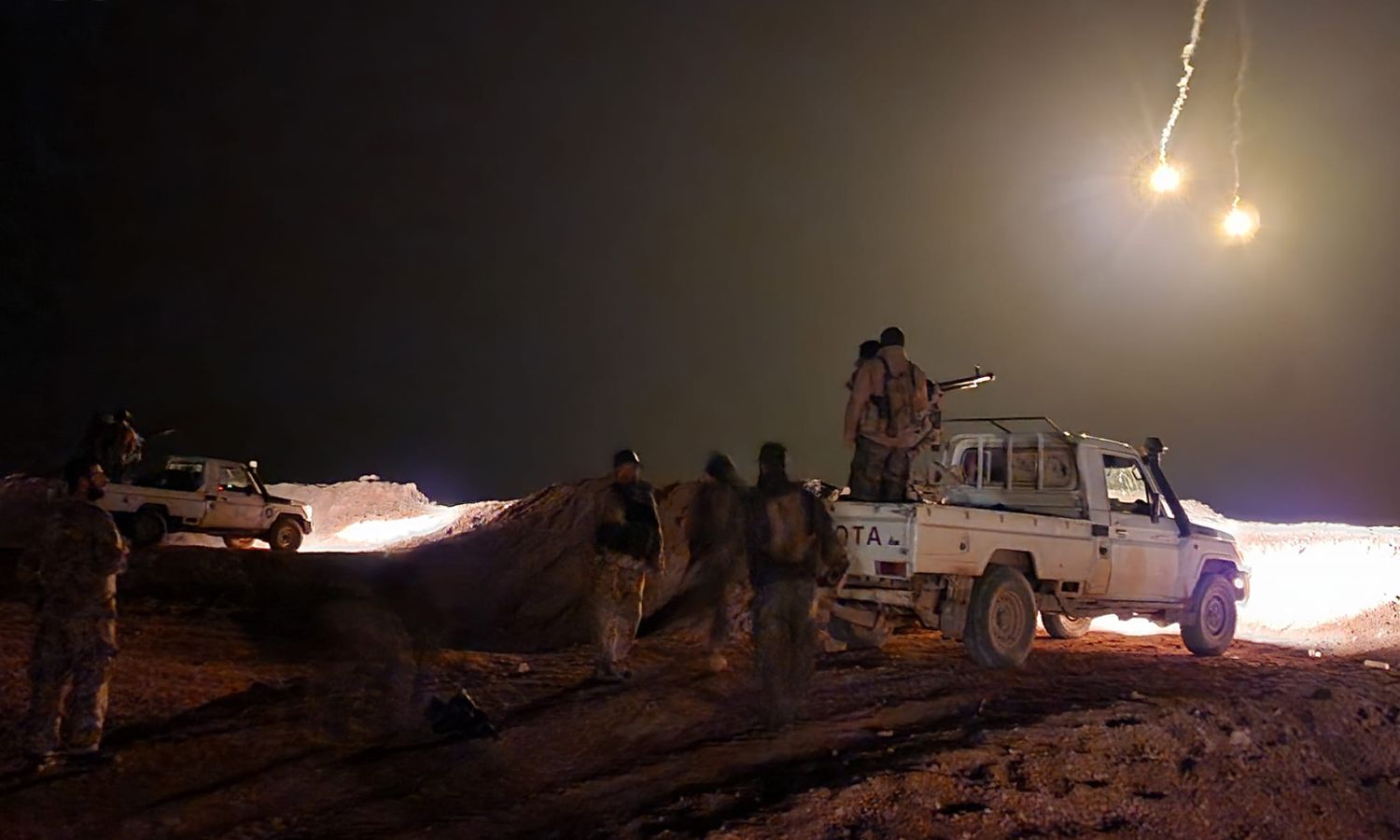



Drones have once again targeted the International Coalition base in the al-Tanf area in eastern Homs province, Syria, after a months-long hiatus, although the United States, which leads the coalition, has not confirmed the strike.
An Iranian-supported Iraqi armed group announced that it attacked the al-Tanf military base on Sunday, October 27.
The Revolutionaries group (al-Thawrayoun) comprising factions affiliated with the Islamic Resistance in Iraq, stated via their Telegram account that the base was struck with several rockets and drones.
They indicated that their operations would continue and escalate “until the last US soldier leaves the sacred land of Iraq.”
For its part, the Syrian Observatory for Human Rights, a London-based rights organization, reported that the International Coalition shot down a drone near the border triangle of Iraq, Syria, and Jordan, close to the al-Tanf base.
No response was received by Enab Baladi regarding inquiries sent to the US Central Command (CENTCOM) about the attack on al-Tanf and any ensuing damages at the time of publishing this report.
Al-Jazeera channel quoted a US military official stating that they have no intelligence or operational reports supporting what they described as “allegations” of an attack on US forces at al-Tanf.
“Revolutionaries/al-Thawrayoun” is an account that emerged on Telegram to claim responsibility for strikes targeting US bases in Syria and Iraq (with 488 followers at the time of publishing this news). It has claimed various attacks on US installations, while reports have mentioned rifts within the Islamic Resistance in Iraq, with Revolutionaries being one example.
In a brief analysis published by the Washington Institute for Near East Policy, prepared by researchers specializing in Iranian affairs and security in Iraq, Michael Knights and Crispin Smith noted that the attacks on US bases between July and August “reflect a division in the resistance.”
The analysis pointed to the possibility that elements within the Islamic Resistance in Iraq, especially within the Hezbollah Brigades, feel frustrated about their inability to inflict tangible harm on Israel and their failure to attack US bases since the severe US retaliation and the embarrassment experienced by Mohammed Shia al-Sudani’s government from a wave of strikes last February.
This faction may have underestimated US sensitivity to American red lines, finding itself trapped in a series of reciprocal attacks, now preparing for new American strikes.
The Islamic Resistance in Iraq is a coalition of military factions that the United States labels as proxies for Iran, prevalent in Iraq and Syria, responsible for most attacks against US bases from mid-October 2023 to last February.
The analysts at the Washington Institute speculated that the militants managing the Revolutionaries account do not enjoy widespread support for current attacks from the Resistance establishment represented by the Sabereen News account on Telegram and lean towards the Harakat Hezbollah al-Najuba of the resistance, which is promoted by several accounts, such as Jihad Brothers Team.
The analysis suggested that the attackers are part of the Hezbollah Brigades in Iraq, a faction seeking a larger role in the current regional conflict, as confirmed by the operational commander of the Iraqi Popular Mobilization Forces and the commander of the Hezbollah Brigades, who is subject to US sanctions, Abdul Aziz al-Mohammadawi (also known as Abu Fadak) in public speeches.
According to the analysis, this faction may wish to draw Iraq deeper into confrontation with the United States, potentially leading to the withdrawal of US forces. If there is a strike via the Resistance Axis in Israel in the coming days, this faction may also seek to maximize Iraqi involvement, including launching additional strikes on US bases in al-Tanf and Erbil (which are seen as playing a role in defending Israel) and possibly even on other bases such as Ain al-Asad and International Coalition positions in northeastern Syria.
On February 2, after targeting 85 sites in Syria and Iraq, Washington stated that it struck leadership and control centers, intelligence facilities, and weapons storage facilities used by Iran-backed militias to attack US forces and Coalition troops.
US Department of Defense spokesperson John Kirby stated following these strikes that the US targeted assets that would impact the ability of Iran-aligned militias to carry out future strikes against Americans, according to a recorded press conference released by the White House.
Reuters reported that US officials estimate that Iran manufactured the drone that attacked the US base, resulting in the deaths of three US soldiers and injuries to at least 40 others.
The US strikes came in response to a drone attack that killed three US soldiers and injured over 40 others at a military point known as “Tower 22” at the border triangle of Syria, Iraq, and Jordan.
if you think the article contain wrong information or you have additional details Send Correction